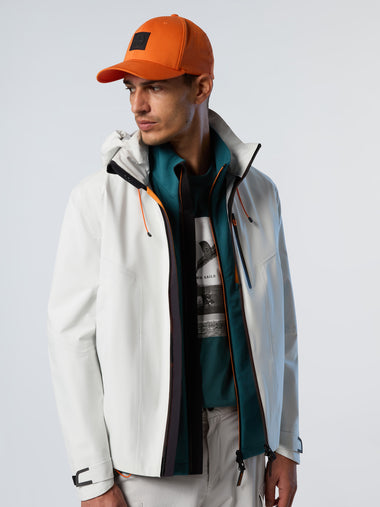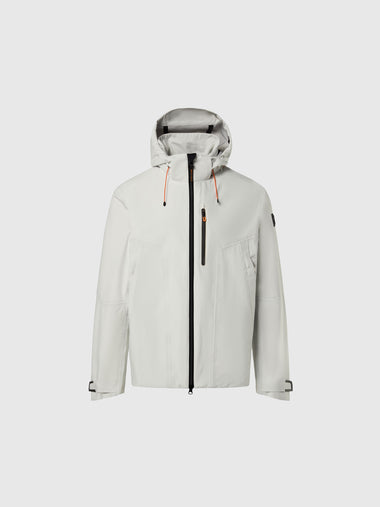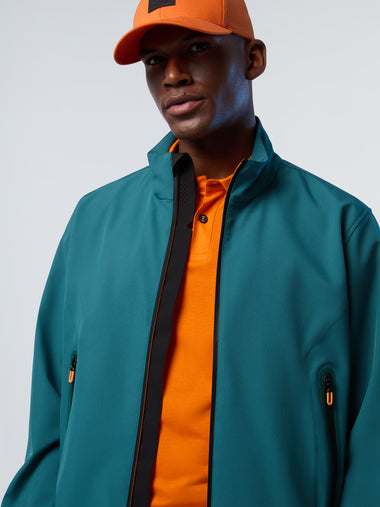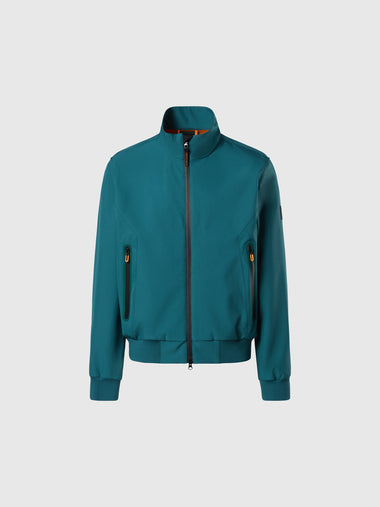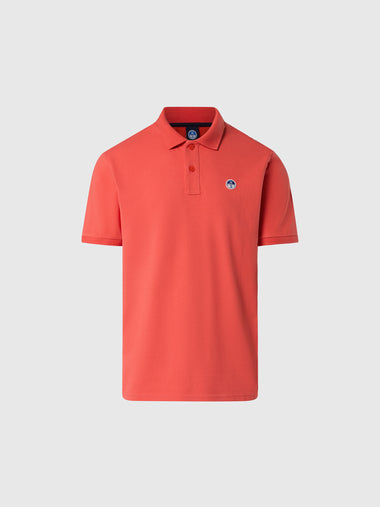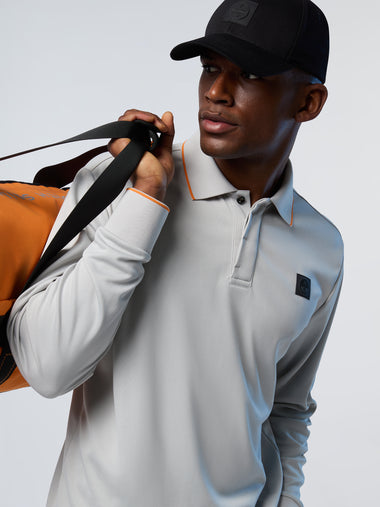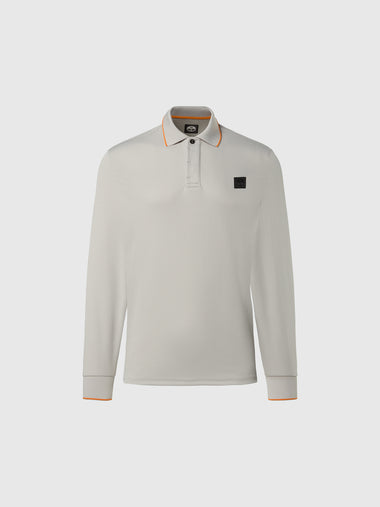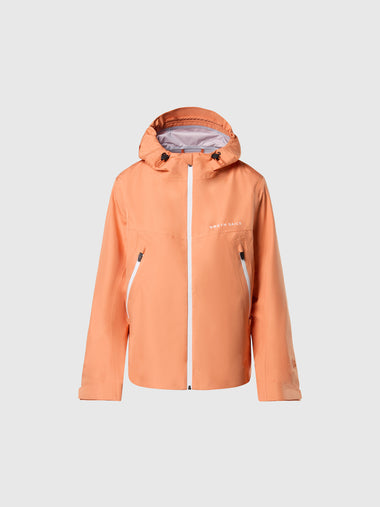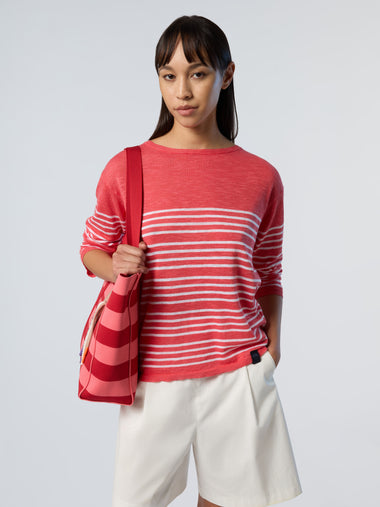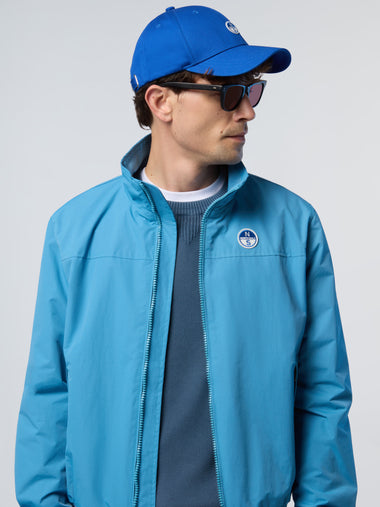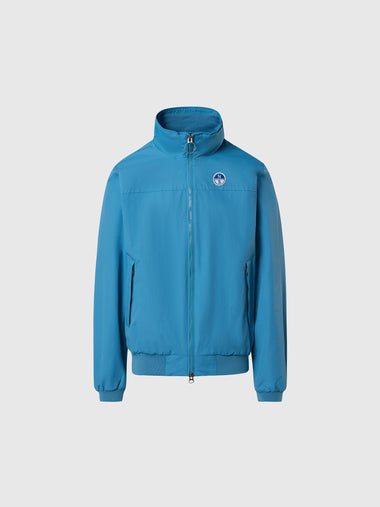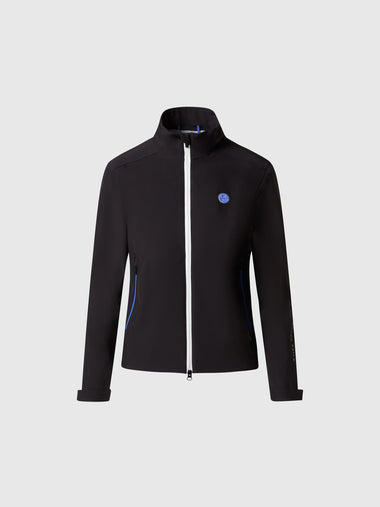HOW TO PREPARE FOR A BIG J/24 REGATTA
HOW TO PREPARE FOR A BIG J/24 REGATTA
A Basic Check List
A basic check list that the North Sails J/24 team and two-time World Champion Will Welles uses when preparing for a big J/24 regatta.
Let’s start at the top…first you need a boat!
BOAT PREPARATION
Hull
- Proper keel shape
- Keel max forward
- Keel max depth
- Faired: keel, rudder and bottom
- Rudder hung at minimum depth
- Plumb boat to make sure keel, mast, mast step, mast partner, chain plates, jib and genoa tracks are symmetrical.
- Wet sand and buff hull, bottom and foils prior to event.
Equipment
- Sails! (Try to show up at the event with fresh sails)
- Proper deck layout with upgraded fittings (make sure your gear isn’t going to break at the event!)
- Newer Anodized Mast (if you have an old mast, don’t let this keep you from competing!)
- Thru bar and spreader sweep set at 160 to 165 mm (tight fit!!)
- Check over your boom for wear and make sure the outhaul is updated.
- A good working spinnaker pole with ends that work properly. (Tapered pole at class minimum weight is nice.)
- Check shrouds, backstay and head stay terminals for corrosion.
- Newer halyards
- Newer running rigging
- Proper tiller and tiller extension that won’t break in a breeze.
- Check all clevis pins, ring dings, bolts, screws etc…
NOTES:
- Try to show up at the event with some time on the halyards and running rigging..this way the splices have had a chance to settle in and the sheets to wear so they’re not soapy and slippery.
- We recommend a shackle on the main halyard, Genoa/Jib halyard and topping lift. None needed on the spinnaker halyard…tie a bowline!
- Think about bringing a spare tiller extension and spinnaker pole as part of your optional equipment.
Measure
Your boat will be fully measured at the Worlds, we strongly suggest if the boat hasn’t been measured before you should get your local measurer to check the boat over. The last thing you want to deal with at the event is needing to change something in the parking lot…no matter how big or small a job it is! **Leave plenty of time for this so act now!
Here are some things that they will measure:
- Builders weight
- Keel measurements
- Rudder measurements
- Spin pole length and weight
- Boom tip weight
- Black bands on mast and boom
- Mast height
- Forestay length
- Lifeline deflection and tension
- J dimension
- Sails
Transport
- Proper tow vehicle
- Serviced trailer
- Working running lights
- Proper padding for your mast, boat etc..
- Proper ratchet tie down straps
- Spare tire
- Tire iron
- Proper jack (probably not your car jack if you can help it)
- I like to take a can or two of “fix a flat”
- North Sails travel covers!
- Paperwork
- Class membership/ Sticker
- Depending on the type of the event, you will have to be a class member to sail class sanctioned events. Registration is yearly for $65 or you can sign up for 2 years for $125. Register online.. You will receive your class card and a yearly sticker that needs to be on the stern of your boat.
Measurement Cert (required for the Worlds)
You need a valid measurement certificate.
Note that the all up dry weight + optional equipment is 1330Kg now, that is less than it used to be so you may have to re-weight.
- One trick we use is that we write the weights of everything on each piece of equipment with a sharpie. That helps a lot!
- Note that the optional and required equipment list needs to be filled out. Make sure you have it on the boat in case you are inspected.
Tuning
SAILS
- Make sure you have a practice set a and a “Game Day” set of sails.
- Do a couple of test runs on the new sails though to make proper marks on the boat
- A basic sail repair kit is mandatory, this should include: tell tales, 4” sticky back-fixes all sails, hand stitching items with palm and small can of McLube.
- Mclubing the tell tales on the genoa as well as the leech area hitting the mast is helpful.
- If the weather gets down below 40 degrees, bring the spinnaker home to prevent seams from becoming unglued.
- If it is really windy out: put Dacron tape over the mainsail battens to prevent from flying out.
MAST
- Straight mast in boat over keel
- No bends, etc…
- Polish before hoisting
- Inspect all fitting, bolts, ring dings, etc…
- Install Teflon Tape at the spreader tips, bottom 2 meters of the upper shrouds and the front of the mast where the clew hits during tacks.
- Mark all shrouds so they always go back into the same side of the mast to ensure a good tuning matrix.
- Defer back to Equipment Section for more overlapping ideas.
SHROUDS
- Look for rust in the swedge fittings on all shrouds, replace when needed.
- At the beginning of the event (during the practice days), it is good to wind the rig up hard overnight to stretch the shrouds out, helping to settle in.
- Always have a fast way to tune the rig: two adjustable wrenches tied together, turnbuckle handles, and proper screw driver, etc… make sure the system is in place.
CHARTS
- Rig Matrix is a must have, written down in a water proof book on board at all times.
- This is accomplished up on land or at the dock at the beginning of the event, checking throughout the regatta.
- Nautical charts of the area are very helpful.
- Tide charts of the area are key as well.
Team
SKILLS
There are 5 pretty defined roles on the boat, Bow, mast/twing, middle/tactician, cockpit/trim and helm. One of the cool things about the J24 is it really is a team boat, you’re as good as your weakest link and it is hard to win unless you have a team that understands these roles.
PERSONALITY
- Let’s face it you spend a lot of time with your team, and the worlds is a solid week of on the boat, in the car and sharing housing. It is important to get along with your team and most importantly enjoy their company and have fun!
- Fill your team with solid sailors. It is important that they understand each role on the boat; this really helps the team run like a fine tuned machine.
- It is always nice if you have some crew that understands boat work, rigging, and general sail repair is good too!
- There is always a ton of items to get the boat to the regatta and back again, it’s nice to have team members that are willing to pitch in and take on certain tasks, this makes it a team effort and doesn’t put the sole burden on one person. Left for one person it can be a big task and takes a lot of the fun out of the regatta.Know your crews strengths. Try to divide jobs/tasks up to members based on this. Don’t assign the best chief on the team the boat work tasks or vice versa…..you’re liable to end up eating sawdust sandos or worse!
- Try to tackle the big tough jobs (like polishing the bottom with Teflon) as a team, it goes faster too!
SIZE
The max crew weight is 882lbs. We suggest sailing right at weight. Typically a team will have a set driver, trimmer, tactician and bow. Then crews tend to round out the weight with the mast position. The simple answer is, build around your key members and sail at max weight!
Logistics
Logistics are number one in our book! Some folks fly by the seat of their pants on this but it’s always a little less stressful to have things planned out well in advance!
HOUSING
- Stay in a place where everyone has a bed, the days are long at any regatta and this is a week of straight sailing!
- Try to stay as close to the regatta site as possible, walking distance in nice if you can swing it!
FOOD
- We suggest to bring a simple snack on the boat, energy bars, peanut butter and Jelly sandwiches, diet coke, and lots of water!
- Eat a good breakfast and lunch too!
SHIPPING
- If you are shipping your boat to the event, remember: You can’t ship a boat last minute. Find a good shipping broker that you trust and hold on!
- There are plenty of good charter boats in the states so please let us know if you need any help locating one.
- You may bring some of your favorite Genoa blocks, sheets, tiller, spare parts or whatever, make sure you check your airline’s weight restrictions and bear in mind there are many good places here in the states to get items if you need them!
- Sails, you may choose to fly with your sails, check the airline box restrictions and get the appropriate box. This will save you lots of extra $$ and if you’d prefer, let one of the North Sails One Design J24 gurus know and we will bring you a set in the van delivered at the event!
TRAILERING
- Make sure you service your trailer, check the lights, brakes, etc…
- Make sure you have proper padding for your trailer keel, pads, mast, rudder, etc…
- Make sure to have proper tie down straps.
- You will want a proper spare tire, lug wrench, jack, jumper cables, can of “fix a flat”, you get the picture!
Practice – Well, practice is key!
TUNE
You want to find a good tuning partner that is as fast or faster and wants to get the same things out of the tuning…has the same goals etc….Is willing to put the same amount of time towards the tuning and to share the data found openly between the two boats. The goal should be to make both boats fast and not just one!
Think about hiring a coach to help, a good coach can help with drills but also with the rig and sail set up. A good coach is always money well spent!
BOAT HANDLING
- Boat handling is what it’s all about! If you think about it the corners are the one time in every race that you can pass boats quickly! Of course wind shifts and things too but those don’t always happen in every race…most times you are rounding a mark at least one time in a race!
- Set a windward mark and a leeward mark. Start with them spread apart so you have plenty of time to get the kite up and then jibe a few times and round the bottom mark. Go around and around until you’re so tired you can’t do another lap! Take a break from time to time and move the marks closer and closer so at some point they’re so close you barley have enough time to get the spin up and then back down before rounding the marks…this will expose any weakness in your boat handling quite quickly! Then stop and break the items down and start over. The goal is to grow as a team and by the end be the best boat handling team on the course!
- The other item that works well is some match racing with your tuning partner. We do this all the time, you’ll need three marks for this.
Racing
Go to as many regattas as you can leading up to the Worlds! What this will give you is confidence getting off the starting line and show you how you line up with some other teams.
THE EVENT
Check in
- Make sure to have all your documents ready to go. Insurance, crew waivers, entry fees, class membership card, US sailing card (or the like) etc….you get the idea!
- Remember, all of the people at check in are volunteering their time so please be nice to them!
Measurement
- Your boat will go through the complete measurement process at the Worlds. Boat weighing, keel and rudder measurements, mast measurements, sail measurements, Equipment list, etc… I’d suggest trying to confirm these items before you show up at the event. You will still need to get all the measurements done again at the regatta but you may expose any potential problems prior to showing up at the worlds which will be less stressful to deal with ahead of time!
- I’d suggest going through your required and optional equipment list and confirm the weights of things. Write the weight on the items so to save time later weighing the items. They should have a scale at the event for you to use as well but I strongly suggest showing up ready to go!
- Most events have measurement sign up for all these stations, sails, crew weight, boat weighing, mast and boom etc….make sure you are proactive and get yourself on the list!
- The more prepared you are ahead of time the less time you will have to spend at the event on these items to get passed in measurement. This way you can spend more time on the water!
- Take some tools and spare parts…some etc. lead etc…all the scales seem to weigh differently, try and have items to fix and potential problems without having to run to West marine 20 times!
- Have your rule book on hand just to clarify any items that may come up.
Docking
- Bring tons of fenders and long dock lines.
- Find out if the boats will be on the dock or on a mooring. Sometimes having a dock box is nice to store extra gear, tools, fuel etc…Dehumidifier is nice too!
Cleaning the Bottom
Bring a mask and a wetsuit to clean the bottom of your boat each morning!
SAILING A WORLD CHAMPIONSHIP
Big Lines
- Figure out which end of the line is favored and then try and stick around that area. Don’t get caught too far away from where you want to be on the line!
- Continue to track the wind shifts so you don’t get caught on the wrong side of the line. If the wind is all over the place I suggest hanging in the middle so you can make a last minute decision.
Lots of Boats
- Remember the same basic rules apply with 20 boats or 100 boats…you want to get off on the favored side of the line with a good hole to leeward to you don’t have to tack for a while….carving a good hole on the starting line is what it’s all about….
- With more boats and longer lines it is even more important to start on the favored end of the line. Make sure you get out to the race course early and do your homework!
- Lots of boats = lots of traffic. Make sure all crew are looking for boats to prevent any collisions.
Protests
- Try and sail clean and stay out of the protest room! If you find yourself in a protest make sure you have your rule book and a witness or two. Remember the protest room is always a 50/50 thing….if you fouled do your penalty and if you’re the protestor make sure it is really a valid protest.
On the Water Etiquette
- Try and represent your country well in a proper seaman like fashion.






